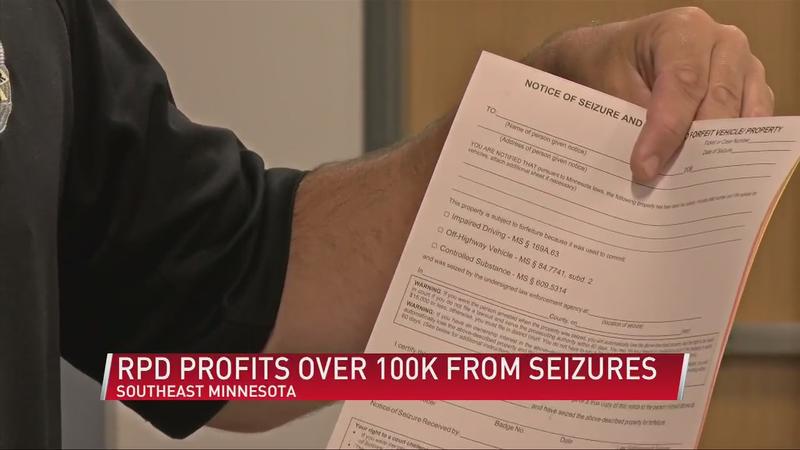Local law enforcement see over $400,000 profit from asset forfeitures
[anvplayer video=”5129282″ station=”998128″]
(ABC 6 News) – A new report from the Minnesota State Auditor’s office provides insight into what happens with items seized by law enforcement after illegal activity.
The process is called asset forfeiture. When law enforcement stops illegal behavior, like in a drug bust, they have the opportunity to take items involved in that illegal activity and sell them.
These could be items such as cars, guns, and cash.
The Southeast Minnesota Violent Crimes Enforcement Team, which focuses on controlled substance seizures, can see hundreds of thousands of dollars in profit. According to a report released Tuesday from State Auditor Julie Blaha, in 2021 the team of 10 counties profited $402,368 from the seized property.

Most of this comes from cash seizures, or from re-selling cars and guns.
"Some of these firearms are very nice collector’s pieces. Is it fair to destroy them? Or should we make money? It’s a catch-22 and we just have to look at it every so often," said Captain Mike Bromberg, commander of the Enforcement Team.
State law says law enforcement is allowed to sell some property seized from an illegal activity like drug sales, prostitution, and drunk driving. According to the report, the Rochester Police Department profited $107,911 in 2021, with most profits coming from seized vehicles.
"We’re not out to take peoples’ cars. What we do is to stop a danger to the public," Sargent Greg Jeardeau with the Rochester Police Department said.
State law restricts what the money is used for. Departments can invest in training programs and can buy new gear like security cameras or bulletproof vests. Additionally, a judge has to permit departments to sell seized items. Property owners have 60 days to appeal forfeiture to the courts.
Law enforcement says profits seem big this year due to backup from the pandemic.
"We had 144 cases and 74 of those were from 2011 to 2019," Bromberg said.
Blaha acknowledges this.
"This is showing up in our report at disposition. What you don’t see is the initiation date in our report, so you can’t compare," Blaha said during a live-streamed listening session about the report.
Departments say profits are usually much smaller than they were in 2021, and they don’t depend on this money in their budget.
"Determining how much money you’re going to get in seizures is like rolling dice and trying to guess what numbers you’re going to get," Bromberg explained.
Law enforcement agencies expect their forfeiture profits to be even smaller next year. New legislation even further limits and regulates what departments are allowed to seize. For example, RPD says they had around 54 cars in 2021. In 2022 they are expecting around 12.
The entire audit can be found here.